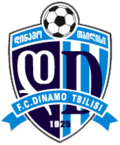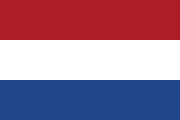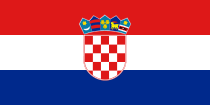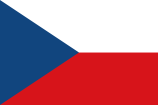FC Dinamo Tbilisi
- Dinamo Tbilisi redirect here. For the basketball club, see BC Dinamo Tbilisi
 |
|||
| Full name | Football Club Dinamo Tbilisi | ||
|---|---|---|---|
| Nickname(s) | Dinamo დინამო | ||
| Founded | 1925 | ||
| Ground | Boris Paichadze Stadium Tbilisi, Georgia (Capacity: 55,000) |
||
| Manager | Kakhaber Kacharava | ||
| League | Umaglesi Liga | ||
| 2008-2009 | 2nd | ||
|
|||
FC Dinamo Tbilisi (Georgian: დინამო თბილისი) is a Georgian football team, based in Tbilisi, the capital of Georgia.
Dinamo Tbilisi was one of the most prominent clubs in Soviet football and a major contender in the Soviet Top League almost immediately after it was established in 1936. The club was then a part of one of the leading sport societies in Soviet Union, the All-Union Dynamo sports society which had several other divisions beside football and was sponsored by the Soviet Ministry of Internal Affairs. Its main claim to European fame was winning the Cup Winners' Cup in 1981, beating FC Carl Zeiss Jena of East Germany 2-1 in the final in Düsseldorf. Throughout its history, FC Dinamo Tbilisi produced many famous Soviet players: David Kipiani, Mikheil Meskhi, Ramaz Shengelia, Alexandre Chivadze, Kakha Kaladze, Slava Metreveli, Murtaz Khurtsilava, Giorgi Merebashvili, Giorgi Loria. After the break-up of the Soviet Union, it would later produce some of the finest Georgian players such as Temuri Ketsbaia.
FC Dinamo Tbilisi was one of a handful of teams in the Soviet Top League (along with FC Dynamo Moscow and Dynamo Kyiv) that were never relegated. Their most famous coach was Nodar Akhalkatsi, who led the team to the Soviet title in 1978, two Soviet cups (1976 and 1979), and the UEFA Cup Winners' Cup in 1981. He was also assistant coach to the Soviet Union National Team during the FIFA World Cup in 1982. FC Dinamo Tbilisi are also 13-time Georgian league champions and 8-time Georgian Cup holders (the current record).
Contents |
History
The Beginning: 1920s
The history of FC Dinamo Tbilisi began in autumn 1925 when the Dinamo sports society set out to form a football club, at a time when football was gradually becoming one of the most popular sports in the world.
In 1927, FC Dinamo Tbilisi established a Juniors club, "Norchi Dinamoeli" (young Dinamo). The Juniors club provided FC Dinamo Tbilisi with many young skillful players, including the first goalkeeper who played for Dinamo in the USSR championship, the first captain (Shota Savgulidze), defender (Mikhail Minaev), forward (Vladimer Berdzenishvili) and other famous players.
In the early years in Georgia, no official championship existed, so the teams played friendly games against each other. The first match was played with Azerbaijan team Dinamo Baku on 26 January 1926, with the more experienced Azerbaijan squad winning 1-0. The Dinamo team starred: D.Tsomaia, A.Pochkhua, M.Blackman, I.Foidorov, N.Anakin, A.Gonel, A.Pivovarov, O.Goldobin, A.Galperin, S.Maslenikov, V.Tsomaia.
Three days later, Dinamo played another Azerbaijan team, "Progress" and easily beat them 3-0.
Despite their success in the middle years of the 1930s, the football federation of the Soviet Union placed FC Dinamo Tbilisi in the first league instead of the premier league. Dinamo continued to show good form against the top teams, winning 9-5 in Tbilisi against probably the best team in the USSR championship, Dynamo Moscow. They later beat Dinamo Leningrad 3-2, winning 5 matches out of 6 plus a draw against Stalinec Moscow. This was enough for Dinamo to qualify in the premier league.
World War II: 1930s and 40s
The second championship started in autumn 1936. Altogether Dinamo played 1424 matches in SU championship. The first match was against Dinamo Kiev, finishing 2-2, with goals by Nikolas Somov and Boris Paichadze The team sheet was: A.Dorokhov, S.Shavgulidze (E.Nikolaishvili), B.Berdzenishvili, N.Anakin, V.Jorbenadze, G.Gagua, I.Panin, M.Berdzenishvili, B.Paichadze, M.Aslamazov and N.Somov.
The first victory in the USSR championship was in the match against Spartak Moscow on 25 September with Mikheil Berdzenishvili scoring the winning goal. Dinamo finished the season in 3rd place. There was a good opportunity to become champions, but this faded after the 2-3 loss against Krasnaia Zaria Leningrad. Dinamo also played an unforgettable match in Moscow with Spartak in the SU cup quarterfinal with Dinamo scoring 3 goals in stoppage time, beating Spartak 6-3. They reached the SU Cup Final, but unfortunately lost 0-2 to Lokomotiv Moscow. Their first international match was against Spanish team Baskonia in 1937, which Dinamo lost 0-2.
In the 1930s and 40s, Dinamo was one of the top Soviet football teams, even though they did not win a title. They were often referred to as the "crownless champions" with the team including: S.Shavgulidze, A.Dorokhov, S.Shudra, B.Frolov, M.Berdzenishvili, A.Kiknadze, V.Panjukov, V.Berezhnoi, G.Gagua, V.Jorbenadze, G.Jejelava.
1950s
In the 50s, the team was led by a wonderful player, Avtandil Ghoghoberidze who spent 14 years in Dinamo. He still holds the record for games played and goals scored for Dinamo, with 341 matches and 127 goals. In the same period, the following players starred for Dinamo: G.Antadze, V.Marghania, N.Dziapshipa, M.Minaev, A.Zazroev, V.Eloshvili, A.Chkuaseli…
A prominent place in Dinamo history belongs to Andro Zhordania, an outstanding coach who is considered as one most important figures in the club's history. His period in charge at the end of the 1950s was seen as "the Renaissance" of Dinamo's traditions, which laid the ground for the major successes connected with his name. FC Dinamo's Digomi practice ground is named after this club legend.
First Soviet Successes: 1960s
The first major success came in 1964 when Dinamo won the Soviet Union championship, with the team unbeaten in the last 15 matches. At the end, Dinamo was tied with Torpedo Moscow so the teams played an additional match in Tashkent, Uzbekistan which Dinamo won 4-1. Georgian supporters celebrated the victory by naming their team "Golden Guys".
A popular French magazine "France Football" wrote: "Dinamo team has great players. Their technique, skills and playing intellect enables us to name them the best Eastern representatives of 'South American Football Traditions', if Dinamo were able to participate in the UEFA Champions Cup, we are certain, they would bring the hegemony of Spanish-Italian teams to an end." Unfortunately no Soviet team appeared in the Champions Cup at that time.
The 1964 Soviet Championship team sheet was: S.Kotrikadze, B.Sichinava, G.Petriashvili, J.Zeinklishvili, G.Tskhovrebov, V.Rekhviashvili, G.Sichinava, S.Iamanidze, S.Metreveli, V.Barkaia, M.Meskhi, I.Datunashvili, A.Apshiev. Coach: Gavril Kachalin.
In the late 60s and early 70s, the quality of the Dinamo team was further enhanced by several skillful players: the legendary Mikheil Meskhi, the inimitable Slava Metreveli, the captain of Soviet Union national team Murtaz Khurtsilava, Revaz Dzodzuashvili, Kakhi Asatiani, Gocha Gavasheli, Guram Petriashvili, Piruz Kanteladze and the brothers Nodia.
European Years: 1970s
Dinamo's first appearance in Europe was in 1972 against Dutch team Twente Enschede in the UEFA Cup. Dinamo won 3-2, with two goals by Givi Nodia and one by David Kipiani. The following players appeared on the field in this historical match: D.Gogia, R.Dzodzuashvili, V.Chelidze, M.Khurtsilava, S.Khinchagashvili, G.Petriashvili, M.Machaidze, K.Asatiani, V.Gutsaev, L.Nodia, G.Nodia, D.Kipiani.
In 1973, Dinamo won their first International tournament. After beating Athletic Madrid and Benfica, one of the best teams of the time, Dinamo won the Columbus's Caravela Trophy.
In 1976, Nodar Akhalkatsi (a future President of the Georgian Football Federation) was appointed as Dinamo's head coach. It was under his leadership that the team achieved their greatest success with Dinamo. The club was referred to as the "Great Team" between 1976–1982, characterised by a mobile, fast and technical style of play.
In this period, Dinamo won the Soviet Cup title in 1976, defeating Ararat Erevan (Armenia) 3-0 with goals scored by David Kipiani, Piruz Kanteladze (penalty) and Revaz Chelebadze. The team achieved the same success in 1979 when they beat Dinamo Moscow 5-4 on penalties. They also won the Soviet Top League for a second time in 1978. In 1979, the club played its first match in the UEFA European Cup tournament, defeated Liverpool FC (England) but were eliminated by Hamburger SV (West Germany) in the next round.
Last Soviet Days: 1980's

The highlight of Dinamo history was 13 May 1981 when they beat Carl Zeiss (DDR) in the all-Eastern Block Cup Winners` Cup final game 2:1 in Dusseldorf and brought the precious prize to Tbilisi. It was a celebration not only for the team, but for whole Georgia as well.
Cup Winners` Cup winners: O.Gabelia, A.Chivadze, S.Khinchagashvili, N.Khizanishvili, G.Tavadze, V.Daraselia, Z.Svanadze, T.Sulakvelidze, V.Gutsaev, D.Kipiani, R.Shengelia, N.Kakilashvili, V.Zhvania. Goals scored by V.Gutsaev (1:1) and V.Daraselia (2:1).
Helmut Schon, World Cup 1974 winner German National Team's head coach said: "It is to be said directly, Dinamo deserved the victory. This team has top quality performers." FC Dinamo Tbilisi became eastmost European trophy holder team.
In 1982 Dinamo qualified to semifinal in Cup Winners` Cup tournament. In the 80s numerous skillful players appeared in the team, but various reasons they were not able to do their best: Grigol Tsaava, Mikheil Meskhi (junior), Otar Korghalidze, Gia Guruli, Mamuka Pantsulaia, Merab Zhordania, Levan Baratashvili and many other talented players.
Since 1983 crisis began in the history of Dinamo Tbilisi. It was hard for the club to qualify from the first rounds of the Soviet Cup. Bad performance in championship. From 1983 to1989 team appeared only once on the UEFA tournaments.
Dinamo Tbilisi played its last game in Soviet Union championship on 27 October 1989 against Dinamo Kiev. The fact that Dinamo played its first and last official matches in SU championship with Dinamo Kiev is kind of symbolic, even more so is that, both matches ended with draw 2:2.
A League Of Their Own: 1990's
90s. In 1990 Georgian Football Federation refuses to participate in Soviet Union championship. That mean that no Georgian Football Clubs would appear on Soviet tournaments. From that very moment newest history of FC Dinamo Tbilisi started.
The most titled football club in Georgia played its first match in Georgian National championship against Kolkheti Poti on 30 March 1990. Surprisingly Dinamo loses the historical match with the score 0:1. In spite of the bad luck in the first round Dinamo proved its strength and appeared the winner of the first Georgian National championship. Club kept the title of the champion throughout the next 9 championships. First time club won the Georgian Cup in 1992. They beat Tskhumi Sokhumi in the final game.
In 1993 Dinamo makes double, became winner of Georgian Championship and Georgian Cup simultaneousely. Although, this was a great challenge, more important fact occurred in 1993. Dinamo played its first international official match representing independent Georgia. Dinamo won home match against Linfield (N.Ireland) 2:1 with goals from Shota Arveladze and Gela Inalishvili. The second leg in Belfast ended 1:1. Unfortunately Dinamo did not qualify to the next round. The club was suspended for two years from UEFA tournaments.
FC Dinamo Tbilisi continued to win Georgian championships and Georgian cup, but there was no luck on European tournaments.
In 1996 Dinamo qualified in 3 rounds of UEFA Cup. They beat Grevenmahcer (Luxemburg) 4:0 - 2:2, Molde (Norway) 2:1 - 0:0 and Torpedo (Russia) 1:0 - 1:1. Unfortunately club was not able to overcome Portuguese Boavista and left the tournament. This was the best result in Dinamo Tbilisi recent history (1990–2001). Later, the migration of the key players to Western European clubs caused negative results. It became harder and harder for the club to win Georgian Championship or Georgian Cup.
Stadium
Dinamo stadium was completed 1976, after a 10 yearlong construction. A huge group of architects, under the supervision of famous Georgian specialist Gia Kurdiani, worked on the project.
Before that, in place of new Dinamo stadium was a smaller stadium with maximum capacity of 35 000. The demand for new, bigger stadium was increasing because of the successful performance of Dinamo Tbilisi. This was the Communist time, when every problem had to be solved by the USSR supreme government body. The leader and the first secretary of Georgian Communist Party Eduard Shevardnadze was able to persuade Official Moscow, that Georgia needed bigger and better stadium for home matches. By the time stadium was built, it took the third place with its capacity in Soviet Union. It could fit 78 000 supporters and fulfill every standards and requirements of Soviet Football Federation as well as UEFA.
The first official match played after stadium was built occurred on September 29, 1976. This was UEFA cups 1/32 final match between Dinamo Tbilisi and Cardiff City, Wales. The opening game ended successfully for Dinamo, score 3:0.
Even though stadium's maximum capacity was 78 000, Georgian football fans can remember matches with more accommodation. For instance, in 1979 Dinamo was hosting one of the best British teams - Liverpool. The first round was played in England with the score 2:1 Liverpool won. So the pressure was high on the second game. Stadium was attended by 110 000 people and their support played important role in winning. Dinamo beat Liverpool 3:0 and qualified in 1/8 final. In Soviet Union Dinamo stadium is record keeper of the average attendance of 45 000.
The record of attendance repeated in 1995. Georgia vs. German24rwerwerwerrwetadium. Also football clubs Spartak Moscow (Russia) and Dinamo Kiev (Ukraine) often played their autumn international matches on the stadium.
Hundreds of Georgian, Russian, European and even South American stars played in Tbilisi Dinamo stadium. In 1985 stadium hosted the qualifying stage of Juniors World Cup. Taffarel and Muller were playing for Brazilian national team.
Since 1995 stadium was renamed to Boris Paichadze National Stadium. Paichadze was the legendary Georgian football player of all times.
National stadium was the home field of the Georgian National team for several years. Georgians played unforgettable matches against Wales 5:0 and Poland 3:0.
Stadium can remember many glorious days of 1978 and 1979 triumphs. Holding lighted torches, 80 000 fans came in 1981 just to congratulate European Cups Winners Cup's winning team Dinamo Tbilisi.
As an architectural building the National Stadium is estimated as one of the best in Georgia. Nearly all of the seats in second circle are covered. Unfortunately in official games according to UEFA regulations stadium can fit only 22 000 supporters on individual seats. Because of that reason Sport organization "Dinamo" is reconstructing "Dinamo" Stadium.
The reconstruction of the Stadium is completed and it fulfills all the standards of UEFA and FIFA, it now can fit 78 000 football fans.
Eurocups Record
| Season | Competition | Round | Country | Club | Score |
|---|---|---|---|---|---|
| 1972-73 | UEFA Cup | 1/32 | FC Twente | 3-2, 0-2 | |
| 1973-74 | UEFA Cup | 1/32 | PFC Slavia Sofia | 4-1, 0-2 | |
| 1/16 | OFK Beograd | 3-0, 5-1 | |||
| 1/8 | Tottenham Hotspur F.C. | 1-1, 1-5 | |||
| 1976-77 | European Cup Winners' Cup | 1/16 | Cardiff City F.C. | 0-1, 3-0 | |
| 1/8 | MTK Budapest FC | 1-4, 0-1 | |||
| 1977-78 | UEFA Cup | 1/32 | FC Inter | 1-0, 0-0 | |
| 1/16 | KB | 4-1, 2-1 | |||
| 1/8 | Grasshopper-Club Zürich | 1-0, 0-4 | |||
| 1978-79 | UEFA Cup | 1/32 | S.S.C. Napoli | 2-0, 1-1 | |
| 1/16 | Hertha BSC | 0-2, 1-0 | |||
| 1979-80 | European Cup | 1/16 | Liverpool F.C. | 1-2, 3-0 | |
| 1/8 | Hamburg | 1-3, 2-3 | |||
| 1980-81 | European Cup Winners' Cup | 1/16 | Kastoria F.C. | 0-0, 2-0 | |
| 1/8 | Waterford FC | 1-0, 4-0 | |||
| 1/4 | West Ham United | 4-1, 0-1 | |||
| 1/2 | Feyenoord Rotterdam | 3-0, 0-2 | |||
| Final | FC Carl Zeiss Jena | 2-1 | |||
| 1981-82 | European Cup Winners' Cup | 1/16 | Grazer AK | 2-0, 2-2 | |
| 1/8 | SC Bastia | 1-1, 3-1 | |||
| 1/4 | Legia Warszawa | 1-0, 1-0 | |||
| 1/2 | Standard Liège | 0-1, 0-1 | |||
| 1982-83 | UEFA Cup | 1/32 | S.S.C. Napoli | 2-1, 0-1 | |
| 1987-88 | UEFA Cup | 1/32 | PFC Lokomotiv Sofia | 1-3, 3-0 | |
| 1/16 | Victoria Bucureşti | 2-1, 0-0 | |||
| 1/8 | Werder Bremen | 1-2, 1-1 | |||
| 1993-94 | UEFA Champions League | 1Q | Linfield F.C. | 2-1, 1-1 | |
| 1994-95 | UEFA Cup | 1Q | FC Universitatea Craiova | 2-0, 2-1 | |
| 1/32 | FC Tirol Innsbruck | 1-0, 1-5 | |||
| 1995-96 | UEFA Cup | 1Q | PFC Botev Plovdiv | 0-1, 0-1 | |
| 1996-97 | UEFA Cup | 1Q | CS Grevenmacher | 4-0, 2-2 | |
| 2Q | Molde F.K. | 2-1, 0-0 | |||
| 1/32 | FC Torpedo Moscow | 1-0, 1-1 | |||
| 1/16 | Boavista FC | 1-0, 0-5 | |||
| 1997-98 | UEFA Cup | 1/32 | MPKC Mozyr | 1-1, 1-0 | |
| 1/16 | SC Braga | 0-4, 0-1 | |||
| 2009/10 | UEFA Europa League | 2Q | Red Star Belgrade | 2-0, 2-5 | |
| 2010-11 | UEFA Europa League | 1Q | FC Flora Tallinn | 2-1, 0-0 | |
| 2Q | Gefle IF | 2-1 |
Honors
1981
1964, 1978
- Soviet Cup: 2
1976, 1979
- Georgian League: 13
1990, 1991, 1992, 1993, 1994, 1995, 1996, 1997, 1998, 1999, 2003, 2005, 2008
- Georgian Cup: 9
1992, 1993, 1994, 1995, 1996, 1997, 2003, 2004, 2009
- Georgian Super Cup: 5
1996, 1997, 1999, 2005, 2008
- CIS Cup winner: 1
2004
Current squad
As of July 27, 2009 Note: Flags indicate national team as has been defined under FIFA eligibility rules. Players may hold more than one non-FIFA nationality.
|
|
Topscorers by season
| Season | Name | Goals |
|---|---|---|
| 2004/2005 | 27 | |
| 2005/2006 | 21 | |
| 2006/2007 | 27 | |
| 2007/2008 | 16 | |
| 2008/2009 | 17 |
Notable managers
- 1964-1965:
 Gavriil Kachalin
Gavriil Kachalin - 1966:
 Alexander Kotrikadze
Alexander Kotrikadze - 1967-1968:
 Viacheslav Soloviov
Viacheslav Soloviov - 1971-1972:
 Gavriil Kachalin
Gavriil Kachalin - 1973 :
 Alexander Kotrikadze
Alexander Kotrikadze - 1974 :
 Givi Chokheli
Givi Chokheli - 1974-1975:
 Mikhail Yakushin
Mikhail Yakushin - 1976-1983:
 Nodar Akhalkatsi
Nodar Akhalkatsi - 1984-1985:
 David Kipiani
David Kipiani - 1985-1986:
 Nodar Akhalkatsi
Nodar Akhalkatsi - 1987-1988:
 Kakhi Asatiani
Kakhi Asatiani - 1988 :
 Germann Zonin
Germann Zonin - 1988-1991 :
 David Kipiani
David Kipiani - 1992 :
 Revaz Dzodzuashvili
Revaz Dzodzuashvili - 1992-1994 :
 Givi Nodia
Givi Nodia - 1994 :
 Temur Chkhaidze
Temur Chkhaidze - 1994-1995:
 Sergo Kutivadze
Sergo Kutivadze - 1995 :
 Vaja Jvania
Vaja Jvania - 1996-1997:
 David Kipiani
David Kipiani - 1998 :
 Nodar Akobia
Nodar Akobia - 1998-1999:
 Murtaz Khurtsilava
Murtaz Khurtsilava - 1998 :
 Johan Boskamp
Johan Boskamp - 1999 :
 Gia Geguchadze
Gia Geguchadze - 1999-2000:
 Otar Korghalidze
Otar Korghalidze - 2000 :
 Jemal Chimakadze
Jemal Chimakadze - 2000-2001:
 Revaz Arveladze
Revaz Arveladze - 2001 :
 Gocha Tkebuchava
Gocha Tkebuchava - 2001 :
 Givi Nodia
Givi Nodia - 2002-2004:
 Ivo Šušak
Ivo Šušak - 2004-2005:
 Gia Geguchadze
Gia Geguchadze - 2005-2006 :
 Kakhaber Tskhadadze
Kakhaber Tskhadadze - 2006 :
 Andrei Chernyshov
Andrei Chernyshov - 2006 :
 Kakha Kacharava
Kakha Kacharava - 2006-2008 :
 Dušan Uhrin
Dušan Uhrin - 2008-2009:
 Rainer Zobel
Rainer Zobel - 2009- :
 Kakha Kacharava
Kakha Kacharava
Notable past players
USSR-era players listed have at least one cap for the USSR national football team.
|
External links
| Preceded by Valencia CF |
UEFA Cup Winners' Cup Winner 1981 Runner up: FC Carl Zeiss Jena |
Succeeded by FC Barcelona |
|
|||||